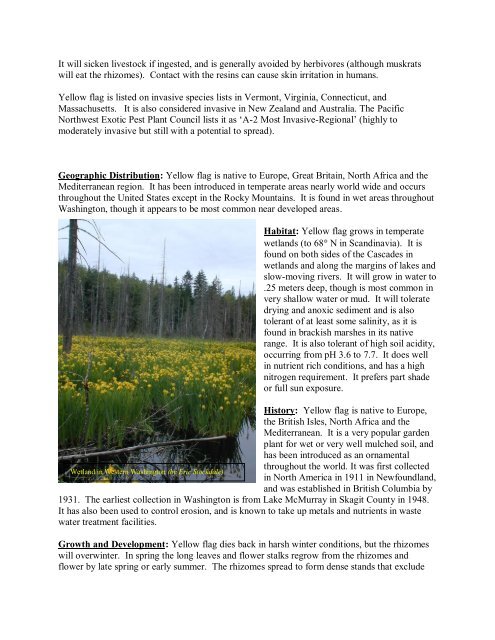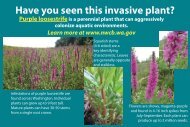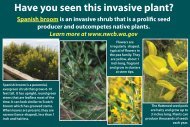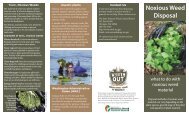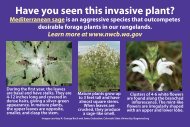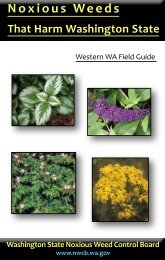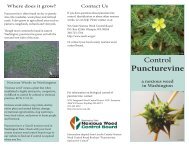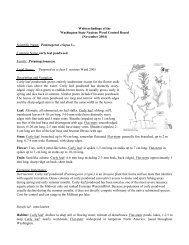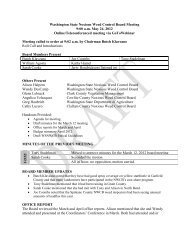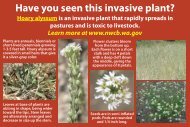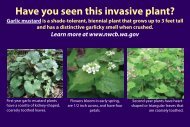Iris pseudacorus L - Washington State Noxious Weed Control Board
Iris pseudacorus L - Washington State Noxious Weed Control Board
Iris pseudacorus L - Washington State Noxious Weed Control Board
Create successful ePaper yourself
Turn your PDF publications into a flip-book with our unique Google optimized e-Paper software.
It will sicken livestock if ingested, and is generally avoided by herbivores (although muskrats<br />
will eat the rhizomes). Contact with the resins can cause skin irritation in humans.<br />
Yellow flag is listed on invasive species lists in Vermont, Virginia, Connecticut, and<br />
Massachusetts. It is also considered invasive in New Zealand and Australia. The Pacific<br />
Northwest Exotic Pest Plant Council lists it as ‘A-2 Most Invasive-Regional’ (highly to<br />
moderately invasive but still with a potential to spread).<br />
Geographic Distribution: Yellow flag is native to Europe, Great Britain, North Africa and the<br />
Mediterranean region. It has been introduced in temperate areas nearly world wide and occurs<br />
throughout the United <strong>State</strong>s except in the Rocky Mountains. It is found in wet areas throughout<br />
<strong>Washington</strong>, though it appears to be most common near developed areas.<br />
Habitat: Yellow flag grows in temperate<br />
wetlands (to 68 N in Scandinavia). It is<br />
found on both sides of the Cascades in<br />
wetlands and along the margins of lakes and<br />
slow-moving rivers. It will grow in water to<br />
.25 meters deep, though is most common in<br />
very shallow water or mud. It will tolerate<br />
drying and anoxic sediment and is also<br />
tolerant of at least some salinity, as it is<br />
found in brackish marshes in its native<br />
range. It is also tolerant of high soil acidity,<br />
occurring from pH 3.6 to 7.7. It does well<br />
in nutrient rich conditions, and has a high<br />
nitrogen requirement. It prefers part shade<br />
or full sun exposure.<br />
History: Yellow flag is native to Europe,<br />
the British Isles, North Africa and the<br />
Mediterranean. It is a very popular garden<br />
plant for wet or very well mulched soil, and<br />
has been introduced as an ornamental<br />
throughout the world. It was first collected<br />
Wetland in Western <strong>Washington</strong> (by Eric Stockdale)<br />
in North America in 1911 in Newfoundland,<br />
and was established in British Columbia by<br />
1931. The earliest collection in <strong>Washington</strong> is from Lake McMurray in Skagit County in 1948.<br />
It has also been used to control erosion, and is known to take up metals and nutrients in waste<br />
water treatment facilities.<br />
Growth and Development: Yellow flag dies back in harsh winter conditions, but the rhizomes<br />
will overwinter. In spring the long leaves and flower stalks regrow from the rhizomes and<br />
flower by late spring or early summer. The rhizomes spread to form dense stands that exclude


